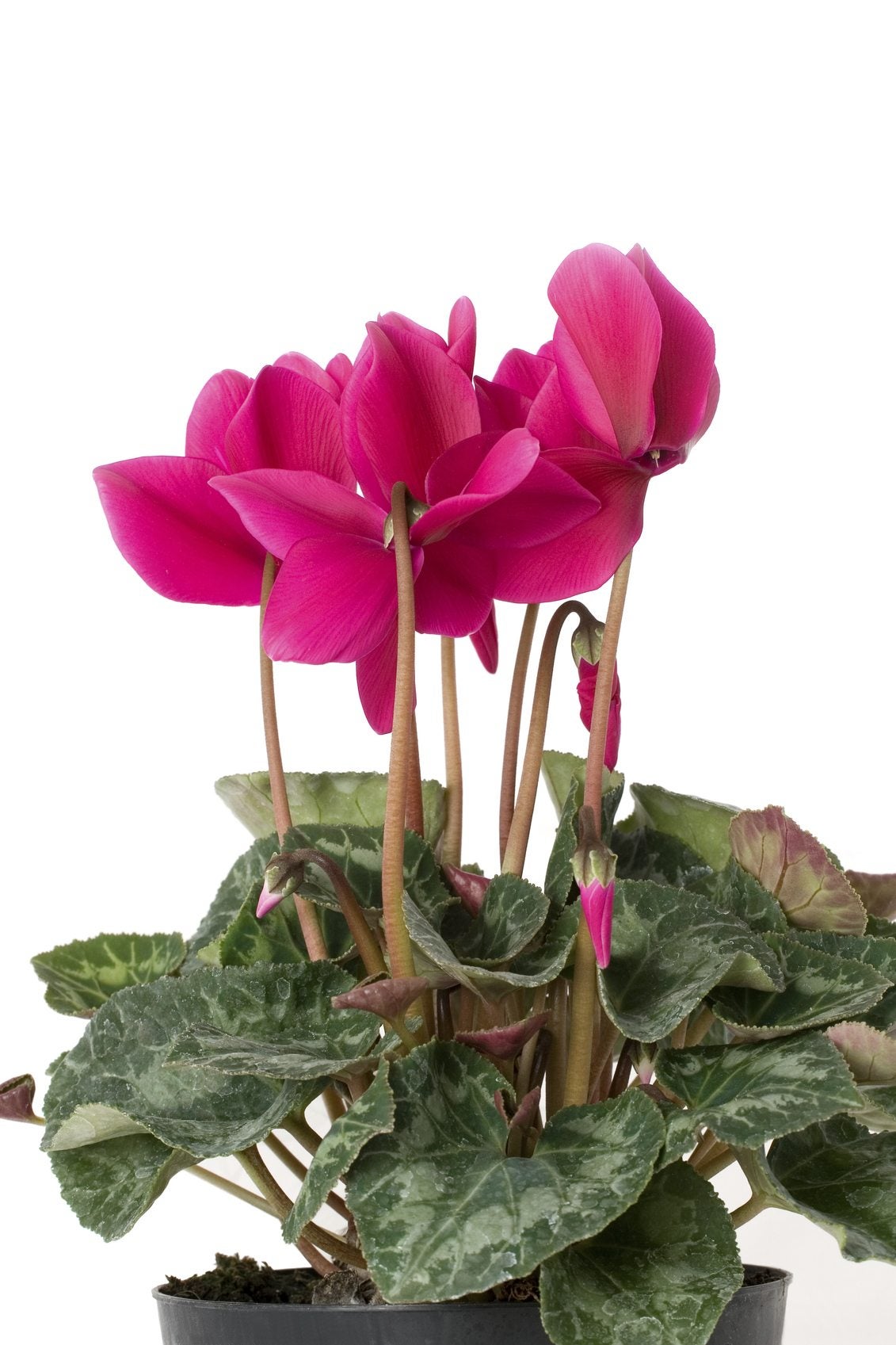Cyclamen Dormant Period – Is My Cyclamen Dormant Or Dead


Cyclamens make lovely houseplants during their bloom season. Once the blossoms fade the plant enters a period of dormancy, and it can look as though it is dead. Let’s find out about cyclamen dormancy care and what to expect when your plant begins to fade.
Is My Cyclamen Dormant or Dead?
During the cyclamen dormant period, the plant may seem to be dead. First, the blossoms shrivel and drop off, and then the leaves yellow and fall. This is a normal part of a cyclamen's life cycle, and you shouldn't be alarmed. There are two things you can check to make sure your plant is still alive. First, look at the calendar. When it’s time for the plant to go dormant, nothing can stop the decline. If you still have doubts, you can push some of the soil aside and check the corm. It should be plump and firm. Soft, shriveled, or slimy corms indicate trouble.
When Do Cyclamens Go Dormant
Cyclamen are Mediterranean plants, and they follow a typical life cycle for plants from that region. Winters are mild and summers are dry. Plants learn to survive by blooming in winter or early spring and going dormant in the summer when moisture is scarce. With proper care, dormant cyclamen plants will reemerge in the fall. While they rest, cyclamens need dry soil and dim light. Cool temperatures encourage abundant blossoms during the next cycle. Stop watering the plant when it enters its decline. If you are using a peat-based potting mixture, you should drizzle a small amount of water onto the soil now and then to keep it from drying completely. Moisture can cause the corm to rot, so use water sparingly, moistening only the surface of the soil. Move the plant to a brighter location when it shows signs of life in the fall. Water the pot thoroughly, adding a complete liquid fertilizer for flowering plants according to the package instructions. Keep it cool to encourage flowering, with daytime temperatures no higher than 65 degrees F. (18 C.) and night temperatures around 50 degrees F. (10 C.).
Sign up for the Gardening Know How newsletter today and receive a free copy of our e-book "How to Grow Delicious Tomatoes".

Jackie Carroll has written over 500 articles for Gardening Know How on a wide range of topics.